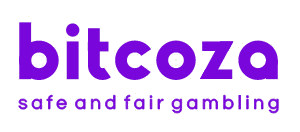Bankroll management forms the cornerstone of responsible casino gaming. New players often neglect this vital skill, risking rapid fund depletion. Using systematic betting percentages rather than random amounts minimizes variance impact, while strategic loss limits protect against emotional decisions during downswings. Though luck remains variable, disciplined capital allocation converts random gambling into structured entertainment with clear risk boundaries. The following principles provide beginners with practical frameworks for sustainable casino play.
Key Takeaways
- Separate your gambling money from essential finances and never wager more than you can afford to lose.
- Limit individual bets to 1-2% of your total bankroll to protect against rapid depletion.
- Set session limits at 5% of your total bankroll and strictly adhere to predetermined stop-loss thresholds.
- Establish win goals to secure profits and stop-loss limits (10-20% of session bankroll) to minimize losses.
- Track all gambling sessions in detail to analyze performance patterns and improve your strategy over time.
Casino Bankroll Management for Beginners
Neophytes entering the casino ecosystem must prioritize establishing a sustainable bankroll management system as their foundational risk mitigation strategy. This process begins with segregating gambling funds from crucial capital, ensuring expenditures remain within one’s financial situation parameters.
Proper bankroll management demands predetermined session limits, typically not exceeding 5% of total reserves per engagement. Conservative bettors implement a unit-based approach, allocating merely 1-2% of their bankroll for each wager, creating a buffer against statistical variance.
Emotional decision-making represents a primary threat to capital preservation; adherence to pre-established protocols neutralizes this risk factor. Strategic utilization of promotional incentives effectively extends gameplay duration without additional personal investment. These bankroll management strategies serve as the firewall between recreational entertainment and financial imprudence, preserving both capital and freedom.
What is Casino Bankroll Management?
Casino bankroll management constitutes a systematic approach to allocating, tracking, and protecting gambling capital through predetermined financial boundaries. Effective management requires segregation of gaming funds from crucial finances, typically maintained in a dedicated account that quantifies risk exposure and prevents financial overextension. Strategic budgeting for casino play involves calculating session limits based on statistical probability, volatility factors, and individual risk tolerance profiles to maximize entertainment value while minimizing catastrophic loss scenarios.
Setting Gambling Limits
Establishing predefined parameters for gaming expenditure constitutes the foundation of effective casino bankroll management. Proper bankroll management requires quantifiable boundaries that reduce capital depletion risk. The bankroll refers to a segregated fund exclusively allocated for wagering activities, insulating crucial finances from potential gambling losses.
| Risk Level | Betting Unit | Session Allocation | Loss Limit | Recovery Strategy |
|---|---|---|---|---|
| Conservative | 1-2% | 10% of total | 50% of session | Pause, reassess |
| Moderate | 2-3% | 15% of total | 70% of session | Scale down units |
| Aggressive | 3-5% | 20% of total | 100% of session | Session termination |
| Recreational | Fixed amount | Fixed amount | Predetermined sum | Entertainment value |
| Professional | 0.5-1% | 5% of total | 30% of session | Variance calculations |
Controlling your bankroll requires discipline to set a loss limit and honor it without exception. Strategic resource allocation helps avoid losing beyond planned parameters, preserving capital for subsequent sessions.
Separate Gaming Funds
The core concept underlying effective risk mitigation in gambling environments centers on fund isolation—the physical and psychological separation of gaming capital from personal finances. This demarcation represents a crucial protective barrier against cascading financial vulnerabilities.
Optimal bankroll management necessitates the allocation of a predetermined amount designated exclusively for casino activities—funds that, if depleted, would not compromise critical fiscal obligations. This discrete monetary allocation constitutes disposable income that carries an acceptable risk of losing.
Sophisticated players maintain dedicated accounts or physical cash reserves specifically for gaming purposes, preventing the psychological slippage that often leads to dipping into household finances. This separation creates a psychological boundary that reinforces disciplined decision-making while simultaneously preserving one’s financial independence through deliberate risk compartmentalization. The segregation of money intended for entertainment purposes eliminates potentially devastating consequences to one’s financial freedom.
Budgeting for Play
Effective casino bankroll management constitutes a systematic approach to capital allocation whereby players predetermine specific monetary thresholds for gambling activities, functioning as both a risk mitigation strategy and a sustainability mechanism. When budgeting for play, individuals must set aside a specific amount exclusively for gaming ventures—typically 1-2% of their total bankroll per wager—ensuring financial obligations remain uncompromised.
- Segment total bankroll into session-specific allocations to extend gameplay duration and minimize catastrophic depletion
- Designate casino expenditures as entertainment costs rather than investment vehicles
- Establish predetermined profit-taking thresholds to secure gains amid volatility
Keep in mind that strict adherence to predetermined parameters is paramount; emotional deviation from established protocols inevitably leads to suboptimal capital preservation. Disciplined budgeting empowers players to experience recreational gambling without compromising financial autonomy.
Setting Your Gambling Budget
Prudent bankroll management begins with a precisely calculated gambling budget—the cornerstone of sustainable casino play. Quantify your disposable income by subtracting crucial expenditures from total earnings, establishing a reservoir of funds you can afford to lose without lifestyle compromise.
Segmentation of capital is paramount; divide your bankroll into smaller tactical allocations based on anticipated frequency of play. A strategic bettor with $500 might deploy $50 per session, thereby extending engagement potential tenfold.
Implement predetermined loss limits for each engagement—a financial threshold beyond which withdrawal becomes mandatory. This circumvents the psychological trap of deficit recovery attempts.
Periodic reassessment is vital; properly managing your gambling capital requires continual adjustment relative to performance metrics and evolving fiscal circumstances. This analytical approach preserves autonomy while optimizing recreational value in the probabilistic environment of casino gaming.
The 5% Rule: Managing Bet Sizes
The 5% rule represents a fundamental risk mitigation strategy wherein players restrict individual wagers to 5% of their total bankroll, effectively extending gaming sessions while preventing catastrophic capital depletion. Implementation requires systematic calculation of maximum bet thresholds prior to engagement in gambling activities, coupled with strict adherence to these predetermined limits regardless of emotional state or outcome sequences. Practitioners may further bolster bankroll protection by establishing daily loss limitations, typically 10-15% of total funds, which creates a secondary protective boundary against variance-induced depletion during periods of statistical downswings.
Understanding 5% Fundamentals
One fundamental principle of casino risk mitigation centers on precise allocation percentages to optimize bankroll longevity. The 5% rule represents a quantitative threshold for wager allocation, prescribing that individual bet amounts should never exceed 5% of total capital reserves. This strategic constraint functions as a protective mechanism against catastrophic depletion during inevitable losing streaks while preserving betting capacity.
- Calculated risk exposure: $1,000 bankroll = $50 maximum wager per betting unit
- Statistical sustainability: Conservative allocation allows prolonged engagement through variance fluctuations
- Psychological balance: Predetermined limits aid rational decision-making divorced from emotional impulses
Disciplined bankroll management through the 5% rule transforms gambling from chaotic speculation to controlled gambling with defined parameters. Players implementing this betting strategy establish a framework that prioritizes longitudinal sustainability rather than short-term volatility, securing their freedom to continue engagement in spite of temporary setbacks.
Implementing Daily Limits
Beyond theoretical understanding of the 5% principle lies its practical application through systematic daily limits. Implementing daily limits constitutes the cornerstone of effective bankroll management, establishing predetermined thresholds that reduce catastrophic capital depletion. The 5% rule operationalizes controlled risk, ensuring ideal session duration while preserving principal investment integrity.
| Bankroll Size | Maximum Daily Limit (5%) | Session Duration Impact | Risk Coefficient | Sustainability Factor |
|---|---|---|---|---|
| $500 | $25 | Extended | Low | High |
| $1,000 | $50 | Ideal | Moderate | Substantial |
| $2,500 | $125 | Standard | Balanced | Moderate |
| $5,000 | $250 | Condensed | Raised | Variable |
| $10,000 | $500 | Strategic | Calculated | Contingent |
This systematic approach encourages disciplined decision-making protocols, preventing emotion-driven wagers during downturns and nurturing long-term sustainability through quantitative restraint rather than qualitative impulse.
Stop-Loss and Win Goals Techniques
Successful casino bankroll management hinges on implementing disciplined exit strategies to reduce variance impact and preserve capital longevity. Establishing quantifiable thresholds—typically 10-20% of bankroll for stop-loss limits—creates a financial firewall against catastrophic losing streaks. Simultaneously, predetermined win goals (e.g., 20% bankroll appreciation) secure profits before variance regression occurs.
- Calibrate stop-loss parameters proportionally to bankroll size (e.g., $100 loss limit on $1,000 bankroll)
- Implement symmetrical or asymmetrical win-loss ratios based on risk tolerance profile
- Periodically recalibrate thresholds as bankroll fluctuates to maintain ideal risk exposure
The synergistic application of both mechanisms creates a systematic decision framework that eliminates emotional decision-making during sessions. This dual-constraint methodology represents the cornerstone of responsible gambling practices, ensuring recreational sustainability while maximizing expected value over extended time horizons.
Game-Specific Bankroll Strategies
Casino games fundamentally differ in their mathematical structures, volatility profiles, and expected loss rates, requiring tailored bankroll strategies that align with each game’s specific risk parameters. Implementing smart bankroll management prevents premature depletion during inevitable downswings.
For blackjack, limit individual wagers to 3% of total funds, adjusting bankroll per bet as your capital fluctuates. Craps players should segment their bankroll into session amounts (10x initial bet), with 20% win goals and 50% loss limits. Roulette demands $60-$100 for outside bets and $150-$250 for inside bets to stay in control during variance swings.
Poker necessitates adherence to the 20 buy-ins rule, providing sufficient buffer against the chance of losing during downswings. Sports bettors should employ either Flat Betting or Percentage Models for sustainable game-specific bankroll strategies that preserve capital while maximizing opportunities.
Tracking Your Casino Sessions
Every disciplined gambler recognizes that meticulous session documentation forms the cornerstone of effective bankroll preservation and optimization. Implementing a systematic tracking protocol allows players to analyze performance metrics across multiple sessions, identifying profitable patterns and detrimental betting behaviors with statistical precision.
- Record temporal data (date, time, duration) to establish correlation between peak performance and specific playing conditions
- Document pre-session and post-session bankroll figures to calculate accurate profit/loss ratios and ROI percentages
- Log game selection, bet types, and wagering amounts to quantify risk exposure across various gaming vehicles
Utilizing digital spreadsheets or specialized gambling applications promotes thorough data aggregation, transforming raw session information into actionable intelligence. This analytical approach equips players with the freedom to make evidence-based decisions rather than emotional ones, systematically optimizing betting strategies while minimizing variance-induced bankroll depletion.
Managing Wins and Avoiding Tilt
Why do mathematically sound strategies collapse in casino environments? The culprit is often emotional decision-making when players lack a clear understanding of how to handle success and failure. Managing your bankroll requires establishing predetermined thresholds for both victory and defeat.
Set realistic profit goals—typically a percentage of your capital—to secure winnings before variance erodes them. Simultaneously, establish a loss limit representing how much money you’re willing to risk without compromise. Players must recognize the signs of tilt: frustration, accelerated betting, or deviation from strategy. When these emerge, strategic disengagement becomes necessary.
Implement systematic betting approaches, such as fixed percentages of your bankroll, to neutralize emotional volatility. Remember, losses are statistical certainties in gambling ecosystems—accepting this reality allows disciplined execution of your bankroll management framework regardless of short-term outcomes.
Using Casino Bonuses to Extend Your Bankroll
Strategic utilization of promotional incentives constitutes a fundamental extension mechanism for maximizing time-to-ruin metrics in gambling environments. Properly utilized, casino bonuses significantly increase initial capital allocation, creating improved statistical probability corridors. Matched deposits effectively double operational capacity, while no-deposit offers provide risk-free exploration opportunities within the ecosystem.
- Loyalty program integration delivers sustained bankroll reinforcement through cyclical reward structures
- Wagering requirements demand quantitative analysis to determine expected value calculations before deployment
- Cashback mechanisms function as loss-mitigation tools, preserving capital during downward variance cycles
Optimal bankroll management integrates these promotional structures as calculated components rather than opportunistic outliers. The prudent operator consistently monitors terms and conditions, deploying bonus capital exclusively when mathematical expectancy supports such allocation, thus creating extended engagement without compromising financial sovereignty.



